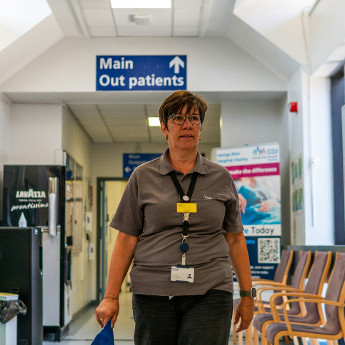If you’ve ever wondered what role the federal government plays in your healthcare (especially after a breast cancer diagnosis), you’re not alone. Many people may be surprised to learn that while the federal government helps fund healthcare, it doesn’t directly provide hospital or doctor services. Still, it plays several important roles that can affect your treatment and care. Here’s a breakdown of what the federal government does do, how it can matter to you, and some ways you can get involved in advocacy.
Funding and guiding healthcare policy
Although provinces and territories manage most of the day-to-day delivery of healthcare services, the federal government helps fund these systems. In fact, in 2023 alone, it transferred over $47 billion to support provincial and territorial health systems.
The federal government also drafts national healthcare legislation that guides provinces toward shared goals. Some recent legislation includes:
Healthcare acts like these aim to improve the health of Canadians. If you have breast cancer, you may wish to contact the federal government when their policies impact your treatment. You can learn more about how to advocate effectively to government with our Digital Advocacy and Storytelling Toolkit.
Approving new drugs and monitoring their safety
Before any medicine can be sold in Canada, it must first be reviewed and approved by Health Canada. This includes treatments that are already approved in other countries.
Health Canada ensures that new drugs are safe, effective, and are high-quality before authorizing them for sale in Canada. Sometimes, they may offer special access to medications not yet approved in Canada.
Health Canada also works with international partners through initiatives like Project Orbis, which aims to simplify the drug approval process for promising cancer treatments. These partnerships do not replace Health Canada’s authority but aim to harmonize the review process by working collaboratively with agency like the U.S.’s Federal Durg Agency (FDA).
However, drug approval is just the first step in a complex, lengthy, and often non-linear process to get new medicines covered under public drug plans. In other words, just because a drug is approved for sale in Canada doesn’t mean it will automatically (or quickly) be made available through government coverage. Health Canada approval also does not guarantee that a drug will ever be publicly funded. This is ultimately up to each province (which we’ll explore further in future blog posts). To better understand this process and the key players involved, read our factsheet here.
After approval, Health Canada continues to monitor drug safety by collecting and assessing reports of side effects (also known as adverse reactions) to drugs and other health products sold in Canada. This is done through the Canada Vigilance Program, where you or healthcare providers can report side effects or learn more about product safety.
You can contact Health Canada to ask questions about policies, drug safety, or the approval process here.
Providing public health guidance
The federal government is also responsible for public health guidance, which is provided through the Public Health Agency of Canada (PHAC). Their work focuses on “protecting against threats to public health, preventing and reducing diseases or injury, and promoting health, well-being, and equity”.
PHAC shares educational materials for Canadians on topics like nutrition, public health conditions, recalls and safety alerts. It also oversees national research and screening guidelines on topics like breast cancer. For example, PHAC coordinates the independent Canadian Task Force on Preventive Health Care.
To share feedback about breast cancer education or PHAC’s work, you can contact them here.
Investing in Canadian health research
Another key role the federal government plays is funding health research. Through the Canadian Institute for Health Research (CIHR), the federal government funds over $1 billion a year in healthcare research funding across the country.
One major initiative is the Strategy for Patient-Oriented Research (SPOR), which focuses on engaging patients, caregivers, and families in research that reflects their real priorities and experiences.
Learn more about the research SPOR funds here and find out about their patient engagement efforts here.
Why this matters
Understanding what the federal government is responsible for helps you know who and where to turn to with questions, concerns, or in your advocacy efforts. Whether you’re looking for treatment access, research opportunities, or public health information, knowing who to contact is a key first step in making your voice heard.
Looking to learn more about advocacy and how to share your story with decision-makers? Use our Digital Advocacy and Storytelling Toolkit to get started.









